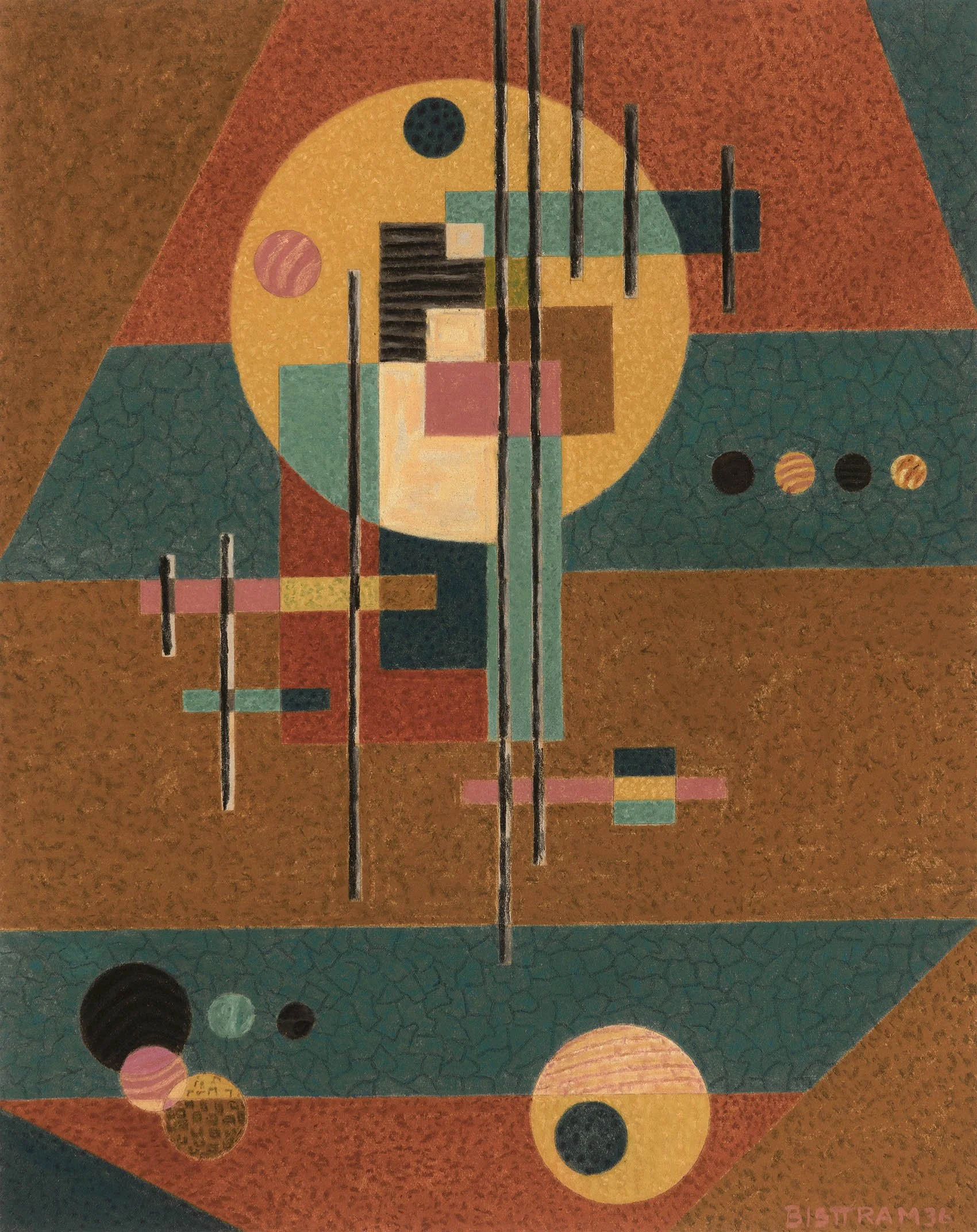EMIL BISTTRAM (1895-1976)
Available Work | Biography
Biography • Emil Bisttram (1895-1976)
Emil Bisttram was born in Hungary, near the Romanian border, in 1895. When he was 11 years old, his family immigrated to New York City. Emil grew up in the tenement buildings that had become the destination for so many Eastern European immigrant families. He was a talented artist, and after a few years began his schooling at the National Academy of Art and Design, then Cooper Union, Parsons, and The Art Student's League. Most of his studies were completed through night courses, as he was working as a commercial artist to support himself. His eagerness to study would translate to a love of and great skill for teaching. He began teaching soon after completing school, first at the New York School of Fine and Applied Arts, and then at the Master Institute of the Roerich Museum.
Bisttram first visited Taos during the summer of 1930. He went initially to escape the hardship of life in New York following the stock market crash. He returned to New York and the following year won a Guggenheim Fellowship to study mural painting. The fellowship enabled Bisttram to travel to Mexico where he studied mural painting with the world famous muralist Diego Rivera. Numerous mural commissions were to follow throughout his career, including murals for the Department of Justice in Washington D.C., The Taos County Courthouse, New Mexico, and the Federal Courthouse in Roswell, New Mexico.
After finishing his studying with Rivera, Bisttram returned immediately to Taos where he founded the Taos School of Art and remained its director for the rest of his life. Bisttram came to be much admired as a teacher. He was an extremely articulate individual, and was as skilled at explaining concepts of composition, drawing and painting as he was at applying those concepts to his own paintings. The school was very well attended, particularly during the summer months. Further demonstrating his skills as an administrator, the following year Bisttram started the first commercial art gallery in Taos, the Heptagon Gallery.
Bisttram first came to Taos as a representational painter. His canvases show stylized renderings of Native American dancers, portraits of natives and Mexicans, as well as depictions of local architecture. He soon began to experiment with non-objective forms in his paintings. He became heavily influenced by the work and philosophy of the painter Wassily Kandinsky. In 1938 Bisttram, along with Raymond Johnson and several other painters, founded the Transcendental Painting Group in Santa Fe, New Mexico. The aim of the group was to work to bring painting beyond the appearance of the physical world. Bisttram continued to be extremely active in the artistic growth of New Mexico for the rest of his life. In 1952 he co-founded the Taos Art Association. In 1959, a retrospective of Bisttam's work was held at the Harwood Art Museum in Taos. As a final honor, and tribute to one who done so much for the artistic community and the identity of New Mexico as a whole, in 1975 April 7th was declared "Emil Bisttram Day," a New Mexico state holiday. The next year, 1976, Emil Bisttram died at the age of 81.








